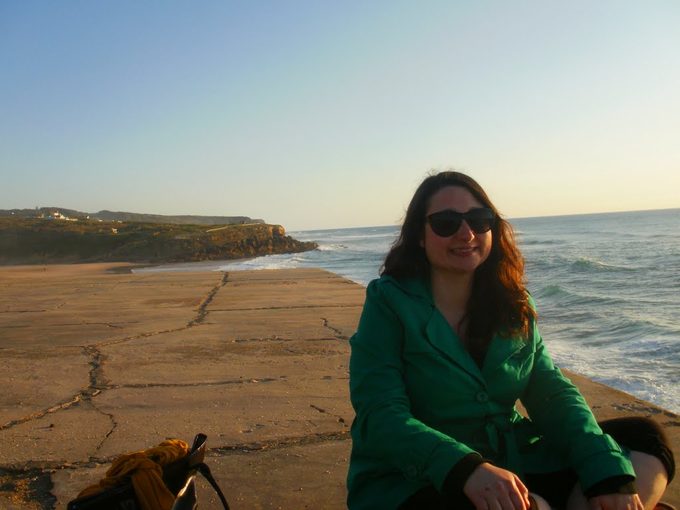I moved back to the United States after living in Europe for eight years, and experienced real reverse culture shock. Here’s what surprised me the most.

I’m an American Who Lived in Europe for 8 Years—Here’s What Shocked Me the Most

After spending eight years living in Dublin, Ireland, I moved back to the United States. This move wasn’t my choice; I assumed I would live in Ireland for the rest of my life. When I arrived in Dublin in 2004, it was during the peak of their “Celtic Tiger” economy, and it felt like the country would continue to prosper for the foreseeable future. But a few short years later, the economy tanked, and I couldn’t find any job at all, let alone one that would sponsor my work visa once I finished my PhD. So, I packed up my life (or at least what could fit into a few suitcases) and left behind the life I had created for myself and the friends who had become my family. I knew that moving back to the United States after eight years in Europe would mean some sort of reverse culture shock, but the differences of living in America vs. Europe became especially stark as I navigated the transition.
While I anticipated the big changes—like less paid time off and different attitudes toward food—it was the little things that really stuck out. And just to clarify: This is solely based on my own experience living in Dublin and then moving to New York City. Europe is a big place, and it would be impossible to make sweeping statements about a whole continent. But here’s what shocked me most about readjusting to American life.
Get Reader’s Digest’s Read Up newsletter for more travel, humor, tech, cleaning and fun facts all week long.
Food shopping
Sure, there are massive supermarkets in Europe, but without a car, I rarely made it to one, and instead stuck to shopping in smaller shops near my house. I had the option of getting my fruits and vegetables from the green grocer, my meat from a butcher and my bread from a bakery. For everything else, I’d stock up at small grocery stores. When I moved back to the United States, I was overwhelmed by the sheer variety of foods, especially cereals, for some reason, in supermarkets. The whole shopping process took longer because I had so many more choices.
Prescription drug commercials
When you’re used to seeing television commercials for everything, from antidepressants to asthma medication, it seems pretty normal. But after spending nearly a decade in Dublin without direct-to-consumer pharmaceutical advertising, you realize exactly how strange medical commercials are. The European Union has strict guidelines on TV ads for prescription drugs, so they’re not part of the advertising landscape. And when you think about it, rewriting the lyrics to pop songs to try and sell diabetes medication to potential customer-patients is a pretty odd premise.
Local news

Dramatic music. Flashy graphics. Glamorous newscasters. These are all parts of local news programs that I took for granted—until I watched the news in Ireland. Given the size of the country (5.3 million people), national news and local news are one and the same, and the broadcasts are relatively straightforward, no-nonsense affairs. Adding to the somber nature of the news was a one-minute segment immediately preceding one channel’s six o’clock news. It used to feature the Catholic prayer “The Angelus,” but has been toned down to tolling bells and different scenes of everyday life. Though I didn’t expect a minute of quiet reflection before the American local news, it did take a while to get used to the high-energy, sensational local news broadcasts in the United States again.
Refrigerator size
The first house I rented in Ireland had three bedrooms, two bathrooms … and one tiny refrigerator. I lived with four other people, and it took a while to get used to sharing a dorm-sized mini-fridge with several roommates. Soon, I learned that this was fairly standard in most homes, except for houses with larger families who had “American” refrigerators and freezers. It didn’t take long to become accustomed to—and actually prefer—the smaller fridge. This encouraged communal groceries, less waste and more frequent shopping for fresh foods. When I first moved back to the States, I couldn’t wrap my head around the fact that I had my very own giant “American” refrigerator all to myself in a small studio apartment.
Elections
Prior to moving to Ireland, I volunteered on a few political campaigns and wanted to continue this work in my new home. I ended up interning with the Irish Labour Party during an election year, and got an inside look at how the process differs from its American equivalent. For starters, there are no paid political television commercials. Each party is permitted a short broadcast before a general election, but it’s typically focused on the party itself rather than specific candidates, apart from the party leader. Not only that, the signage is completely different as well. Instead of lawn signs, political campaign posters are affixed to lampposts, telephone poles and street lights. Each party has its own colors and template, but the signs look the same aside from the candidate’s name and photo.
When I came back to the United States, the election season here seemed so long, and all the TV commercials served as a reminder of the importance of money in American politics.
Quick trips to other countries

Thanks to budget airlines like Ryanair and EasyJet, it’s relatively inexpensive and easy to visit other countries in Europe, even for a quick weekend trip. The freedom of movement for citizens of the European Union, combined with a strong economy, meant that I ended up having roommates and friends from all over the continent when I first moved to Ireland. If they left Dublin, it was nice to know that I could pop over to France or Finland for a short trip without totally breaking the bank (especially since I had a place to stay).
While there are flight deals to be had in America, the budget options are limited, making air travel less accessible. In addition, with the exception of Canada, Mexico and parts of Central America, most of my quick trips now are within the United States. Though staying in the same country, it’s still a change and it has been interesting getting to explore new states and regions.
Why trust us
Reader’s Digest has published hundreds of travel stories that help readers explore the world safely, easily and affordably. We regularly cover topics such as the best places to visit (and the best times to visit them), tips and tricks to zoom through airport security, flight-attendant secrets, hotel-room hacks and more. We’re committed to producing high-quality content by writers with expertise and experience in their field in consultation with relevant, qualified experts. We rely on reputable primary sources, including government and professional organizations and academic institutions as well as our writers’ personal experiences where appropriate. We verify all facts and data, back them with credible sourcing and revisit them over time to ensure they remain accurate and up to date. Read more about our team, our contributors and our editorial policies.
Sources:
- Irish Times: “The Angelus bells reminds us of an Ireland that no longer exists”
- World Population Review: “Ireland”

















